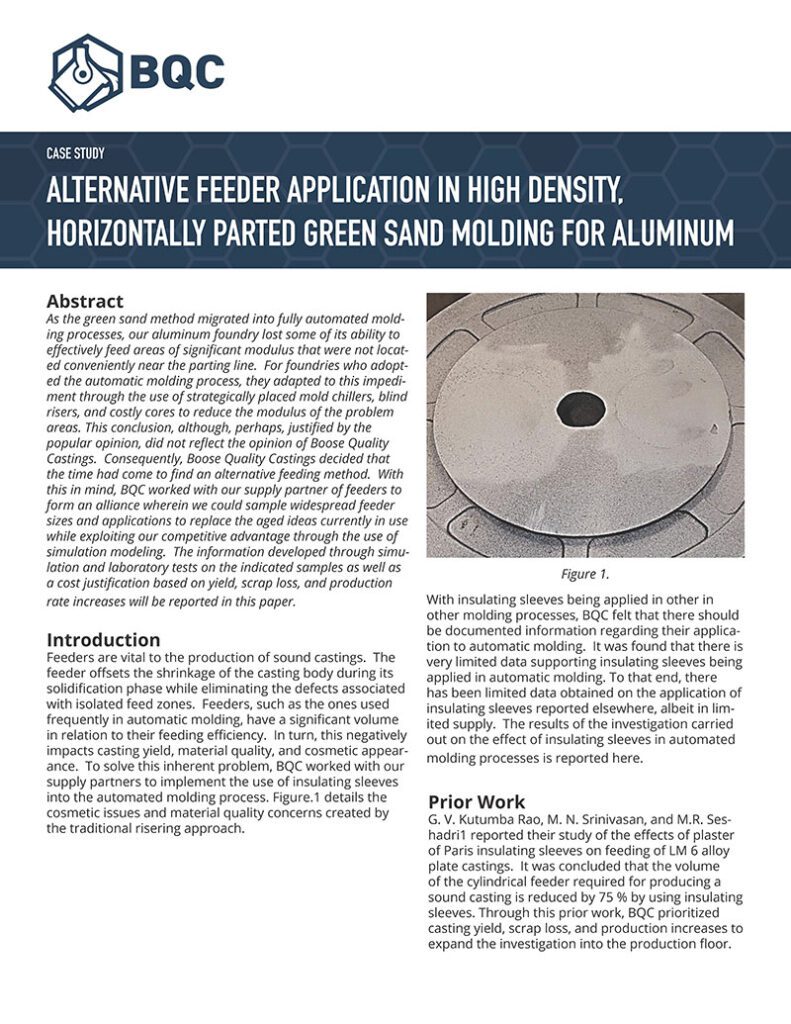Case Study
Alternative Feeder Application In High Density, Horizontally Parted Green Sand Molding For Aluminum
Abstract
As the green sand method migrated into fully automated molding processes, our aluminum foundry lost some of its ability to effectively feed areas of significant modulus that were not located conveniently near the parting line. For foundries who adopted the automatic molding process, they adapted to this impediment through the use of strategically placed mold chillers, blind risers, and costly cores to reduce the modulus of the problem areas. This conclusion, although, perhaps, justified by the popular opinion, did not reflect the opinion of Boose Quality Castings. Consequently, Boose Quality Castings decided that the time had come to find an alternative feeding method. With this in mind, BQC worked with our supply partner of feeders to form an alliance wherein we could sample widespread feeder sizes and applications to replace the aged ideas currently in use while exploiting our competitive advantage through the use of simulation modeling. The information developed through simulation and laboratory tests on the indicated samples as well as a cost justification based on yield, scrap loss, and production rate increases will be reported in this paper.


